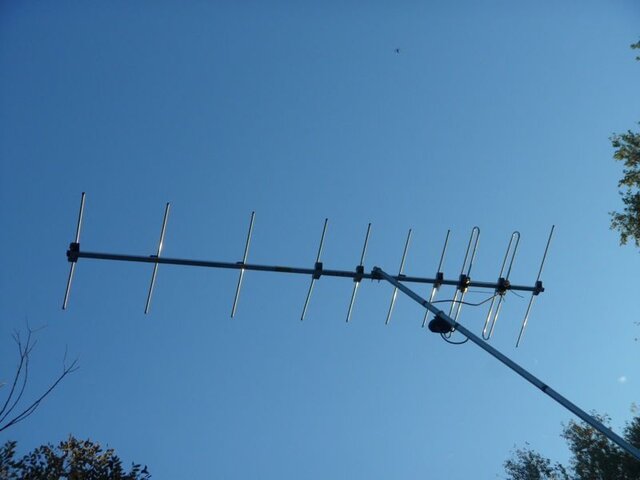I thought Dish only installed 1000.4 now?
The 3 common dishes this days are 1000.2 1000.4 and 500+ (ones on a blue moon old 500 or something else)
I thought Dish only installed 1000.4 now?
DISH never used the Superdish CONUS-wide for its standard HD offering. The Superdish was used only for customers who wanted LIL where locals were beamed from 105W or 121W and as I noted previously, that ended more than eight years ago.Yes, but you have been whining about the size of the Slimline since it came out, when Dish used a similarly sized dish.
Yes, why would you? Why do you care?Why would I? The Slimline is the largest basic dish used in CONUS DBS TV installs.Yes, but the Superdish is no longer used in residential installations (that ended in 2008 as I recall). The basic DISH HD install uses the 1000.2 that has a sail area 40% smaller than the Slimline.









Jason, you must not be too far from me. I live on the Kansas border, maybe 40 minutes north of Fort Scott. You must be northwest of Iola? Luckily I'm still close enough to Topeka and KC that I can pick them up. If I aim for Joplin I can pick them up reasonably well on a clear night. No Wichita action here.
Fredonia area, southwest of Iola. KOAM from Pittsburg is about the only reliable OTA signal here. I have scanned in WIBW out of Topeka at 102 miles north and KOLR in Springfield to the southeast at around 170 miles but no picture on either. Trial and error testing, but it seems like my best bet for more OTA is south toward Tulsa.
Thank you, good to see another SEK'er here too! As for OTA here, it almost seems like a crap shoot. I experiment every few months to try and build on channels...Nice to meet someone else from the SEK area. And yeah, that probably makes the most sense about your Tulsa reception; I'm sure the Tulsa stations are strongest. I know DirectTV even carries two of the Tulsa locals for people in parts of the Joplin DMA, so they're considered significantly viewed down there.
Jason- have you tried picking up KCTV (24.1) or KCPT (18.1) by aiming your antenna to the northeast? By the looks of your TVfool, it looks like they might be possible?
I wouldn't expect much from an antenna inside a metal roof.
 The Winegard is currently in storage
The Winegard is currently in storageAt your distances from the stations, I would suggest a pre-amp.
Another question, how the pre-amplification devices actually works ?
Do you just energize the antenna to catch the low signals, or is something else ?
How about if the signal is there, but is way to weak?
Is there a way to "energize" the antenna to get more sensible?
Is there a way to compensate the small size of the antenna?
. I have a decent antenna 18 feet above ground and a 22db preamp, but even my setup can't bring in some of the really distant signals that I can detect with my meter.
How about if the signal is there, but is way to weak?
Is there a way to "energize" the antenna to get more sensible?
Is there a way to compensate the small size of the antenna?
What kind of signal meter do you have.
If you set the antenna up with a resonant tuning circuit, it can be made more sensitive but that's typically not practical in a broadband TV antenna.Is there a way to "energize" the antenna to get more sensible?
Is there a way to compensate the small size of the antenna?
That would be like trying to electrocute your eyeballs so you could see a distant object better.


